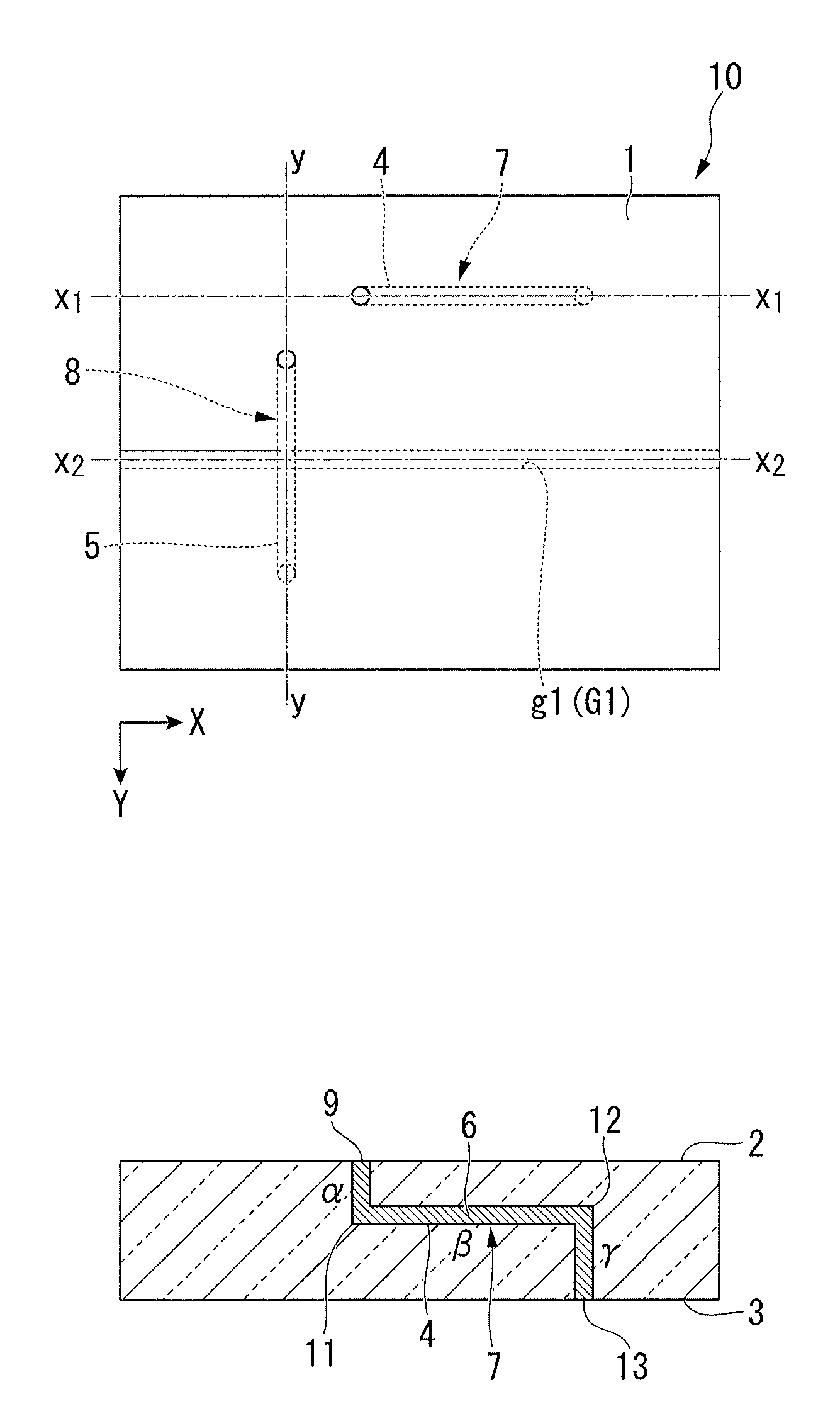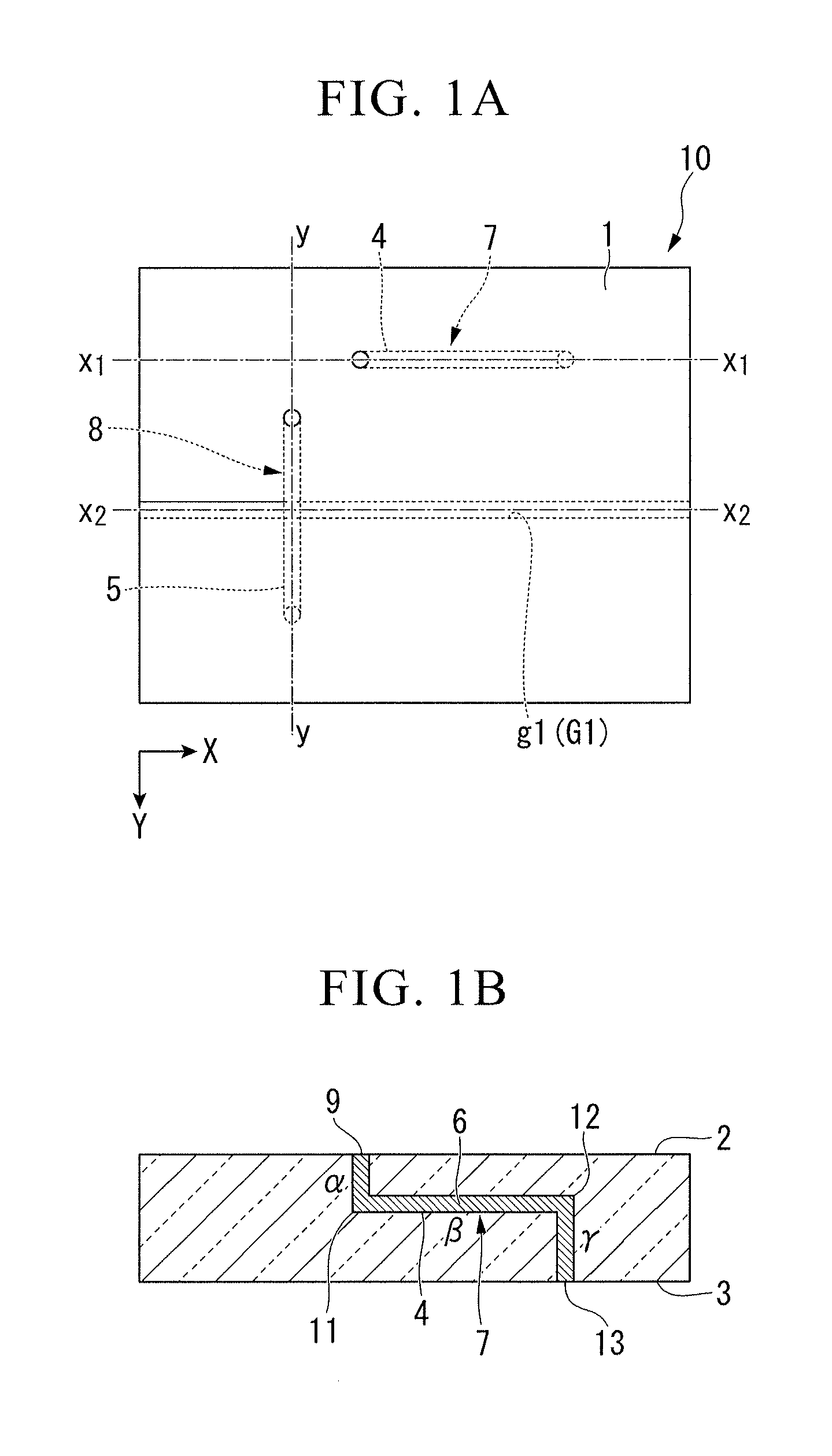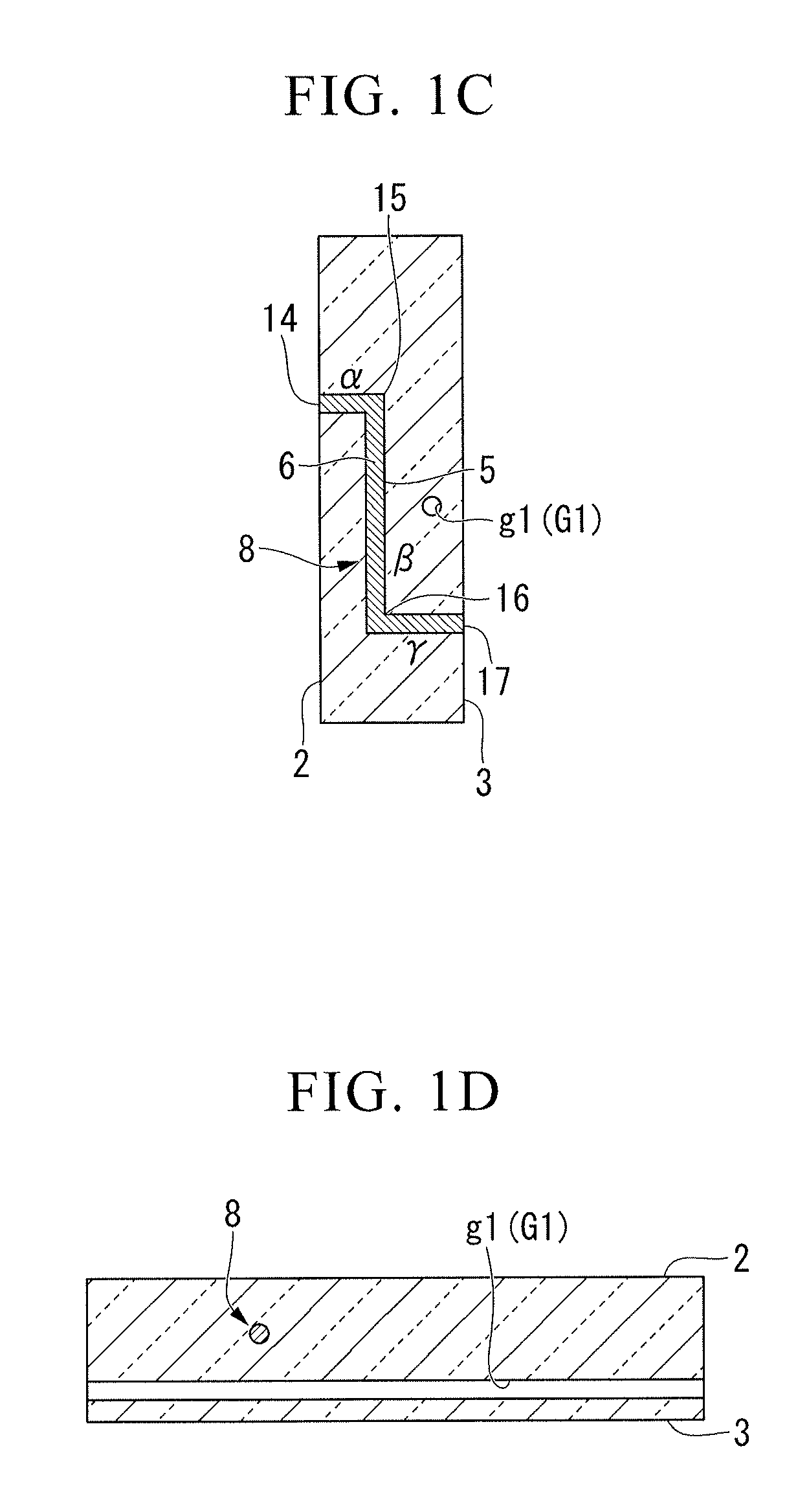Method of forming microstructure, laser irradiation device, and substrate
a technology of laser irradiation and microstructure, which is applied in the direction of printing element electric connection formation, manufacturing tools, etc., can solve the problems of excessive etching speed, non-modified region etching at which the laser has not been irradiated, and different ease of etching, so as to improve adhesion and smooth flow through the fluid channel
- Summary
- Abstract
- Description
- Claims
- Application Information
AI Technical Summary
Benefits of technology
Problems solved by technology
Method used
Image
Examples
first embodiment
Interposer Substrate 10
[0106]FIG. 1A is a plan view of the interposer substrate 10 according to the first embodiment of the present invention. FIG. 1B is a cross-sectional view along line x1-x1 of FIG. 1A. FIG. 1C is a cross-sectional view along line y-y of FIG. 1A. FIG. 1D is a cross-sectional view along line x2-x2 of FIG. 1A.
[0107]This interposer substrate 10 is provided with a first through-hole interconnection 7 and a second through-hole interconnection 8 that are formed by arranging a first micro hole 4 and a second micro hole 5 so as to connect one principal surface 2 (first principal surface) and another principal surface 3 (second principal surface) that constitute a substrate 1 and filling or forming a conductive substance 6 in each micro hole.
[0108]The first through-hole interconnection 7 is provided with a region a that extends in the thickness direction of the substrate 1 from an opening portion 9 that appears at the one principal surface 2 to a bend portion 11, a region...
second embodiment
Surface Interconnection Substrate 30
[0118]FIG. 2A is a plan view of a surface interconnection substrate 30 according to the second embodiment of the present invention. FIG. 2B is a cross-sectional view along line x1-x1 of FIG. 2A. FIG. 2C is a cross-sectional view along line y1-y1 of FIG. 2A. FIG. 2D is a cross-sectional view along line x2-x2 of FIG. 2A. FIG. 2E is a cross-sectional view along line y2-y2 of FIG. 2A.
[0119]This surface interconnection substrate 30 is provided with a first surface interconnection 37 that is formed by a first micro groove 34 being formed in the surface of one principal surface 32 (first principal surface) that constitutes a substrate 31, and filling or forming a conductive substance 36 in this micro groove 34. Moreover, a first fluidic channel G2 that consists of a first micro hole g2, and a second fluidic channel G3 that consists of a second micro hole g3 are provided in the surface interconnection substrate 30.
[0120]The first surface interconnection 3...
PUM
| Property | Measurement | Unit |
|---|---|---|
| thickness | aaaaa | aaaaa |
| sizes | aaaaa | aaaaa |
| size | aaaaa | aaaaa |
Abstract
Description
Claims
Application Information
 Login to View More
Login to View More - R&D
- Intellectual Property
- Life Sciences
- Materials
- Tech Scout
- Unparalleled Data Quality
- Higher Quality Content
- 60% Fewer Hallucinations
Browse by: Latest US Patents, China's latest patents, Technical Efficacy Thesaurus, Application Domain, Technology Topic, Popular Technical Reports.
© 2025 PatSnap. All rights reserved.Legal|Privacy policy|Modern Slavery Act Transparency Statement|Sitemap|About US| Contact US: help@patsnap.com



